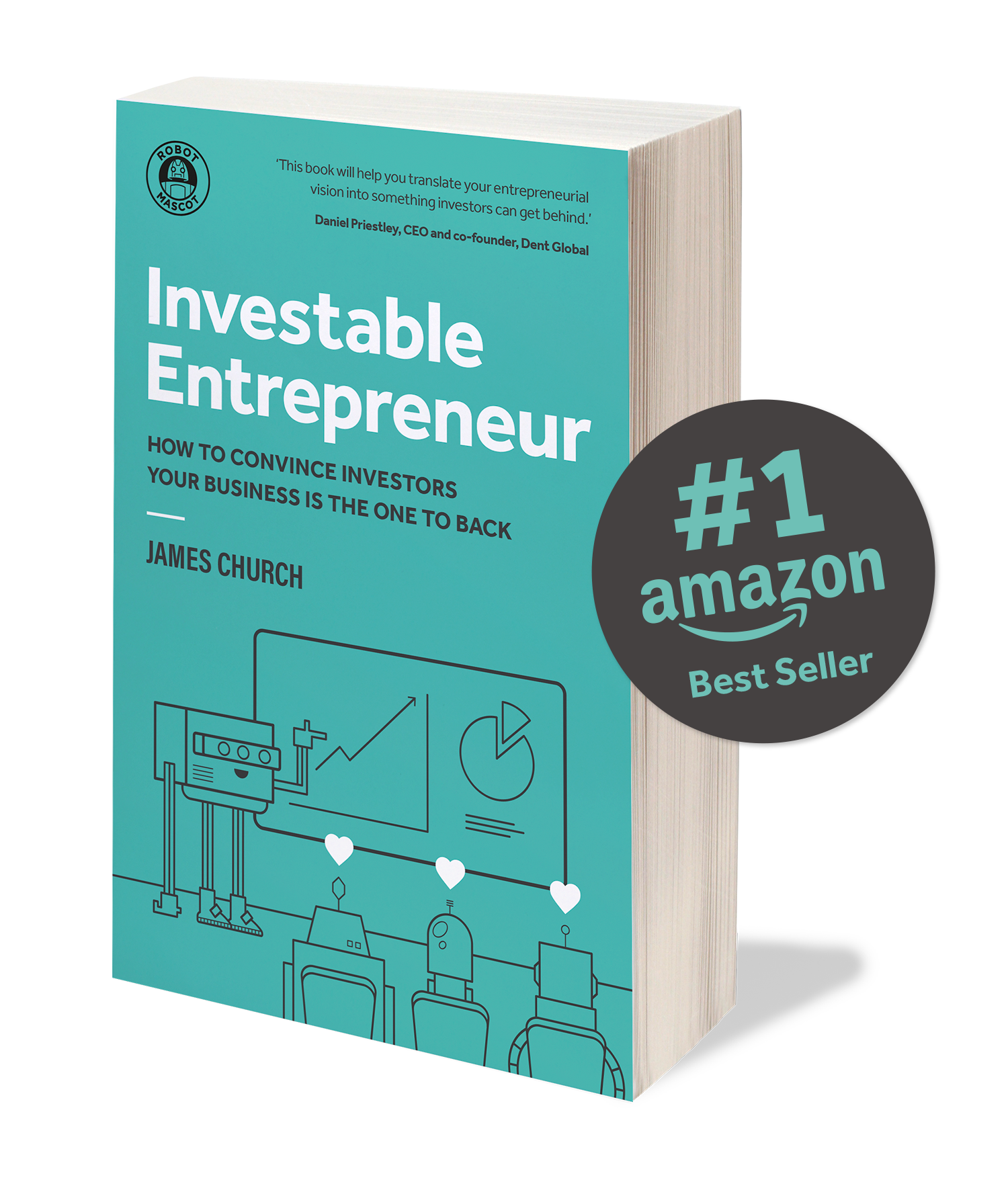

How to Develop a Startup Business Plan: A Step-by-Step Guide
5th February 2025
Creating a startup business plan is one of the most important steps for any entrepreneur. It serves as your roadmap, detailing your vision, strategies and objectives. More importantly, it provides potential investors, partners and your own team with the confidence that your business is not only viable but destined for success.
A business plan isn’t just a formality – it’s a powerful tool that can guide decision-making, secure funding and align everyone around your startup’s goals. This guide will walk you through the process, breaking it down into clear, actionable steps to help you craft a plan that impresses and delivers results.
Remember that we can help you develop your startup business plan and prepare for investors.
Why a business plan matters
A solid business plan is essential for three main reasons:
- It clarifies your vision: A business plan forces you to think critically about your goals, your market and how you’ll achieve success. It turns your ideas into a structured strategy.
- It secures funding: Investors and lenders need assurance that your startup has a well-thought-out path to profitability and a high valuation. A comprehensive business plan provides that confidence.
- It keeps you on track: By outlining clear objectives and benchmarks, your business plan acts as a reference point to measure progress and make informed decisions.
Step 1: Define your vision and objectives
Before diving into the details, you need to articulate your vision and set clear objectives. This is your opportunity to define the “why” behind your startup.
Articulate your mission
Your mission statement should succinctly answer these questions:
- What problem are you solving?
- Why does it matter?
- How does your solution stand out?
For example: “Our mission is to make mental health care more accessible by providing affordable, AI-driven therapy tools for underserved communities.”
FREE RESOURCE: Value Proposition Template
Set clear objectives
Your objectives should be specific, measurable and time-bound. Instead of saying, “We want to grow quickly,” aim for something actionable: “Acquire 10,000 paying customers within 12 months by leveraging social media advertising and partnerships.”
READ: How to Set Business Objectives
In a startup business plan for investment, you should then create a detailed short-term action plan that documents exactly what you are going to do each month across product, team, marketing and operations to reach your defined objectives. This gives investors clarity on how their money is going to be spent and helps them understand how much you can get done, and how quickly you believe you can achieve it.
Finally, you should detail a long-term plan. Start thinking about top-level strategic activities your business will focus on in two, three, four and five years’ time. Consider core activities that will help you increase the value of the business and deliver investors a lucrative exit. It is usual for these objectives to seem quite speculative in comparison to the short-term plan, but that’s only to be expected, the important thing here is that investors can get a sense of your current long-term strategic thinking.
Step 2: Conduct market research

Understanding your market is crucial to developing a business plan that resonates with stakeholders and sets your startup up for success.
Analyse your industry
Explore market size, trends and growth potential. For instance, is your market niche expanding or saturated? Highlight data that supports your business opportunity.
Identify your target audience
Define your ideal customers through detailed personas. Include demographic data (age, gender, location) and psychographic insights (motivations, pain points, purchasing habits). Most importantly, test your concept on them and gather primary feedback – It’s likely you’ll be surprised by the feedback and ultimately you’ll end up with a better business – and better investment case – as a result.
Evaluate the competition
Identify your competitors and analyse their strengths and weaknesses. What gaps do they leave in the market and how does your solution fill them? Use this analysis to refine your unique value proposition (UVP).
Resources for research
Leverage tools like Statista, Google Trends and SEMrush for industry insights. Engage directly with potential customers through surveys or focus groups for real-world feedback.
READ: Market Research for Startups
Step 3: Develop your revenue model
Your business model explains how your startup will create, deliver and capture value. Investors and partners need to understand how you’ll make money and sustain growth.
Outline revenue streams
How will you generate income? Common models include:
- Direct sales
- Subscriptions
- Licensing fees
- Advertising revenue
Be clear and realistic about how these streams will evolve as your business grows.
Outline your costs
Understanding and detailing your startup’s costs is critical when developing a comprehensive business plan. This section gives potential investors clarity on your financial needs and demonstrates that you have carefully considered the expenses required to operate and scale your business.
- Cost of goods sold (COGS) – COGS represents the direct costs of producing or delivering your product or service. These costs are directly tied to your revenue generation and can fluctuate based on sales volume.
- Fixed operational costs – These are expenses your startup incurs regardless of sales or production levels. Fixed costs provide insight into your business’s ongoing overhead and operational efficiency.
- Capital expenditures (CapEx) – CapEx refers to one-time or infrequent investments in physical or digital assets that support your business’s long-term growth.
Break down these costs into detailed line items to enhance transparency and credibility. Also, include assumptions, for example, explain how raw material costs are calculated or why a specific technology investment is critical. You should also prepare for questions because investors may challenge cost assumptions, so be prepared to justify your numbers with research or benchmarks.
Set your pricing strategy
Your pricing should reflect your value while staying competitive. For instance, will you use penetration pricing to attract early adopters or value-based pricing to emphasise quality?
Step 4: Create a marketing and sales strategy
Even the best product won’t sell itself. Your marketing and sales strategy should show how you’ll reach your audience and convert them into loyal customers.
READ: Startup marketing strategy: 6 approaches every founder needs to know
Define your positioning
Positioning is how your brand is perceived in the market. Are you premium or budget-friendly? Cutting-edge or traditional? Choose a position that aligns with your target audience and gives you a unique position to your competition.
Identify channels
Choose marketing channels that resonate with your audience. Examples include:
- Social media for brand awareness and engagement.
- Content marketing (blogs, videos) to build trust and authority.
- Email marketing for nurturing leads.
READ: An Introduction to the Marketing Mindset
Sales strategy
Outline your approach to lead generation and closing deals. For example, will you use inbound marketing to attract leads or a dedicated sales team for B2B outreach? How do you convert a lead to a sale?
Step 5: Plan your operations

Your operations plan provides a behind-the-scenes look at how your business will function. It shows investors that you’ve considered logistics and scalability.
Detail operational requirements
Include information about:
- Physical or digital infrastructure (e.g., office space, cloud servers).
- Required technology (e.g., software, hardware).
- Staffing needs, including roles and responsibilities.
Include details about your key partners, suppliers and operational processes. Highlight efficiencies or innovations that give you an edge.
Set milestones
Establish key operational milestones, such as:
- Launching your MVP (minimum viable product).
- Reaching your first 1,000 customers.
- Expanding into new markets.
- Address risks
Be upfront about potential challenges, such as supply chain issues or talent shortages and explain how you’ll mitigate them.
Step 6: Build your financial plan
The financial plan is the backbone of your business plan. It demonstrates that your startup isn’t just a great idea – it’s a viable, scalable business that investors can trust. This section provides a clear picture of your company’s financial health, future potential and funding needs. To build credibility and inspire confidence, your financial plan should include detailed projections, key metrics and scenario planning.
Investors expect to see three essential financial statements that provide a complete picture of your startup’s financial standing and future outlook:
Profit and loss (P&L) forecast
This statement outlines your expected revenues, expenses and profits over a specific period on a monthly basis for the next three to five years.
How to calculate:
- Start with revenue projections based on your pricing model and sales volume forecasts.
- Deduct direct costs (cost of goods sold) to calculate gross profit.
- Subtract operating expenses (e.g., salaries, marketing spend, utilities) to determine net profit.
Example: If your monthly revenue is projected at £50,000, with direct costs of £20,000 and operating expenses of £15,000, your net profit is £15,000.
Check out our service: Profit & Loss Statements For Startup Businesses
Cash flow projections
This statement shows how money will flow in and out of your business. It’s crucial for demonstrating your ability to manage liquidity and avoid cash shortfalls.
How to calculate:
- Include inflows such as revenue, loans, or investor funding.
- Account for outflows like rent, salaries and loan repayments.
- Ensure timing accuracy: for instance, revenue might be delayed due to payment terms, but salaries are paid monthly.
Tip: Highlight key months where you may face cash gaps and how you plan to address them, such as through short-term financing or cost reductions.
Balance sheet
This summarises your startup’s assets, liabilities and equity at a specific point in time. It’s a snapshot of your company’s financial position.
Key components:
- Assets: Cash, equipment, accounts receivable.
- Liabilities: Loans, accounts payable.
- Equity: Investments from founders and shareholders.
Investors use this to assess your company’s stability and capacity to handle financial obligations.
Check out our service: Balance Sheet For A Startup Business
Detail startup costs
Break down the initial expenses required to launch and operate your business. This level of detail assures investors that you’ve considered all aspects of your spending needs. Typical categories include:
- Product development: Costs for prototypes, software development, or manufacturing setup.
- Marketing campaigns: Budgets for ads, content creation and public relations.
- Office equipment: Items like computers, desks and software licenses.
- Hiring staff: Include recruitment costs and salaries for key hires.
For example: “We estimate £50,000 for initial product development, £20,000 for marketing campaigns to drive early traction and £30,000 for hiring two engineers and one customer success manager.”
Set funding requirements
Clearly outline how much capital you need, why you need it and how it will be used. This shows investors that their money will be put to good use and directly contribute to your startup’s growth.
Be specific: Avoid vague statements like “to grow the business.” Instead, break it down into actionable items.
Example: “We’re seeking £250,000 to scale marketing efforts (£100,000), hire three additional engineers (£90,000) and secure office space (£60,000) for expansion.”
Highlight return potential: Explain how these investments will generate measurable results, such as doubling revenue, expanding into new markets, or acquiring X number of users.
Focus on investor-focused metrics
Investors evaluate startups using specific metrics that indicate growth potential and efficiency. Include these in your financial plan, for example:
- Customer acquisition cost (CAC): How much it costs to acquire one customer.
- Example: If you spend £5,000 on marketing and gain 100 customers, your CAC is £50.
- Lifetime value (LTV): The total revenue a customer brings during their time with your company.
- Example: If the average customer spends £100 per month for 12 months, the LTV is £1,200.
- Revenue growth rate: The percentage increase in revenue over time, signalling scalability.
Provide benchmarks for your industry to contextualise these metrics. For example, SaaS startups often aim for an LTV:CAC ratio of 3:1.
Step 7: Craft an executive summary
The executive summary is often the first – and sometimes only – section that investors read. It must be concise, engaging and compelling.
What to include
- Your business concept: What you do and why it matters.
- Market opportunity: The size and growth potential of your target market.
- Financial highlights: Key projections and funding requirements.
- Competitive advantage: What sets you apart?
Keep it to one or two pages and use clear, impactful language.
Step 8: Refine and review
Your business plan needs to be polished, consistent and ready for scrutiny. Take the time to refine it.
Seek feedback
Share your plan with trusted advisors, mentors, or even potential investors to get constructive criticism. Their insights can help you spot weaknesses or refine your messaging.
Check for clarity
Ensure each section flows logically and supports your overall narrative. Avoid jargon unless it’s essential for your industry.
Professional design
A well-designed business plan is more visually appealing and easier to read. Use charts, graphs and infographics to present data effectively.
Step 9: Use and update your plan
A business plan isn’t a static document – it’s a living guide that should evolve as your startup grows.
Track progress
Use your plan to measure success against your objectives. Are you hitting key milestones? Are your projections holding up?
Adapt to change
Markets shift, challenges arise and opportunities emerge. Update your plan regularly to reflect these changes and ensure it remains relevant.
Developing a startup business plan is no small task, but it’s an investment in your future success. By following this step-by-step guide, you’ll create a plan that not only clarifies your vision but also inspires confidence in investors, partners and your team. Remember, a business plan is a living document – adapt it as your startup grows and use it to stay focused on achieving your goals.
How To Raise Capital For Your Business
Investable Entrepreneur takes you through our winning methodology – the process we use to increase our client’s chances of raising investment by more than 30x.
“This book will help you translate your entrepreneurial vision into something investors can get behind.”
Daniel Priestley, CEO and founder, Dent Global and four times best-selling business author

Keep up to date with what we’re up to via email






Copyright ©Robot Mascot Ltd. All rights reserved.




